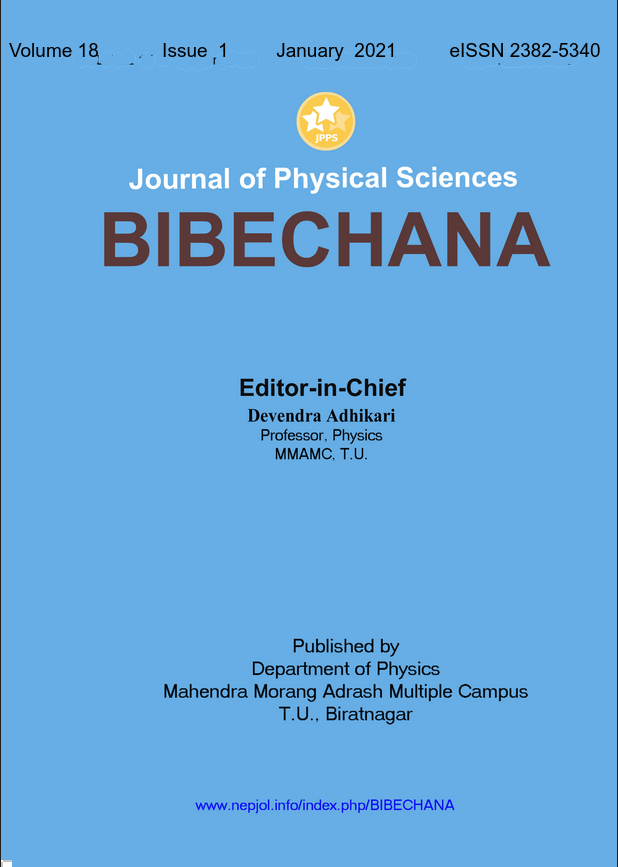Facile methods of preparing pure hydroxyapatite nanoparticles in ordinary laboratories
DOI:
https://doi.org/10.3126/bibechana.v18i1.29600Keywords:
Hydroxyapatite, Nanoparticles, FTIR spectroscopy, X-ray diffraction, BioceramicAbstract
The present work features some simple methods of preparing pure hydroxyapatite nanoparticles (nano-HAp), a useful biomaterial, via various wet chemical methods and using biogenic sources such as eggshells and animal bone. The nano-HAp hence prepared was subsequently characterized by FTIR spectroscopy and XRD technique. The FTIR spectra confirmed the presence of PO43- and OH- ions as major functional groups in the prepared material, with some additional peaks implying the presence of CO3- ions and adsorbed water molecules. The XRD patterns, in agreement with the JCPDS 09-432 data, demonstrated the crystalline nature of the nano-HAp and confirmed the phase as being apatite. The average grain diameter of the nanocrystallites was found in the range of 15-30 nm. The preparatory methods depicted herein can be easily employed in ordinary high school laboratories having basic facilities such as availability of distilled water, some handy glasswares, common laboratory chemicals, and instruments such as balance, hot air oven, and furnace.
BIBECHANA 18 (1) (2021) 83-90
Downloads
Downloads
Published
How to Cite
Issue
Section
License
This license enables reusers to distribute, remix, adapt, and build upon the material in any medium or format for noncommercial purposes only, and only so long as attribution is given to the creator.




